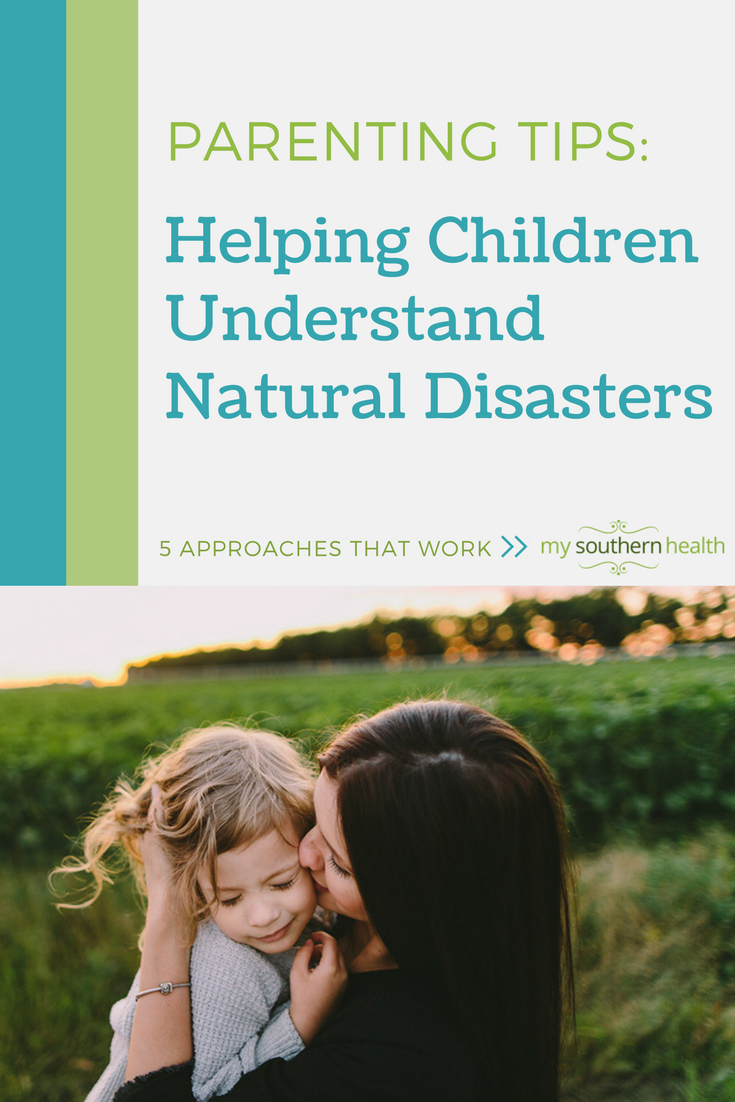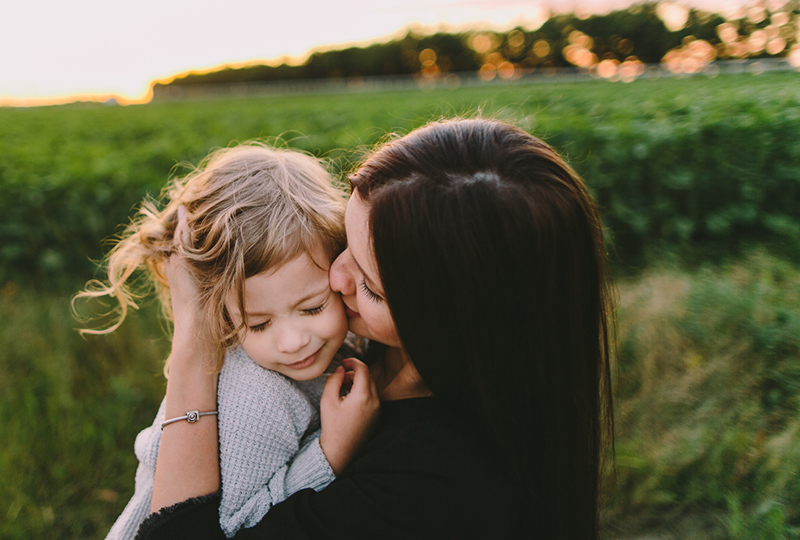Natural disasters, even when far away, can cause children to become concerned about their own safety. Here’s how to talk them through it.
On Oct. 17, 1989, I buried my 3-year-old face into my mother’s legs as the entire world fell apart. At least, that’s what I thought was happening. We clung to the narrow doorframe of my bedroom as our couches and armoire bounced across the shaking living room. I can still hear the sound of my great grandmother’s china shattering on the kitchen floor. Nearly 30 years later, this remains as one of my earliest and clearest childhood memories. And, the earthquake that radiated from the Santa Cruz Mountains that day is still one of the highest recorded tectonic incidents in the contiguous United States.
Fast forward to today’s news. Reports are continuous, and images of violent winds, heavy flooding and widespread destruction are everywhere. Hundreds of miles away, I now find myself facing a new challenge: explaining the chaos and confusion of a natural disaster to my young son (who is afraid of thunderstorms).
Much like adults, children find comfort in routines and regularity. When these are threatened by unpredictable and uncontrollable natural disasters, like hurricanes, a child’s first concern is often about his or her own safety – even when the actual disaster may be a world away. But, when given opportunities to talk about the event and process their feelings in familiar ways, even young children can manage and cope with the stress of a natural disaster.
Tips for talking to children about natural disasters:
- Use clear and honest language. Although tornadoes, hurricanes and floods are familiar events to adults, younger children may have difficulty understanding these concepts. For instance, a young child may not yet understand the difference between a thunderstorm and a hurricane, which can be a source of ongoing fear and distress given the prevalence of thunderstorms. It is important to clarify these misconceptions, and to honestly and clearly answer your child’s questions in language that he or she can understand.
- Address the issue of safety. Although disasters are often not preventable, children need to know that actions are being taken to ensure and maintain their personal safety. Creating a family safety plan can help the child feel a sense of control over future disasters by identifying what steps will be taken and by whom. Some children also may benefit from helping to design and stock a “disaster kit” with useful items such as flashlights, batteries, a radio, water, nonperishable food items and perhaps a comforting stuffed animal or soft blanket.
- Stick to moderation. Although it is important to be informed, continuous exposure to images, videos, conversation and news about the disaster can be overwhelming for children. Turning off the television and limiting computer time can help to give the child a greater sense of control over the content related to the disaster.
- Encourage emotional expression. It’s important to give children permission to feel frightened, confused or angry, and to give them the tools they need to express and cope with these emotions. Providing familiar mediums like play or art can help children communicate feelings and concerns that they might not feel comfortable talking about, or that they might not know how to explain.
- Provide opportunities to get involved. Some children may benefit from opportunities to turn their feelings and concerns into positive involvement, such as donating clothing and toys to victims or sending cards and letters to rescue workers. Giving choices about how and when to get involved in relief efforts is another way to help children feel safe and in control during a natural disaster.
If you or your child need help talking about or coping with a natural disaster, you can contact your healthcare provider or a mental health professional for more information.
This post was written by Jessika Boles, PhD, CCLS, a child life specialist for the Pediatric Critical Care Unit at Monroe Carell Jr. Children’s Hospital at Vanderbilt.


